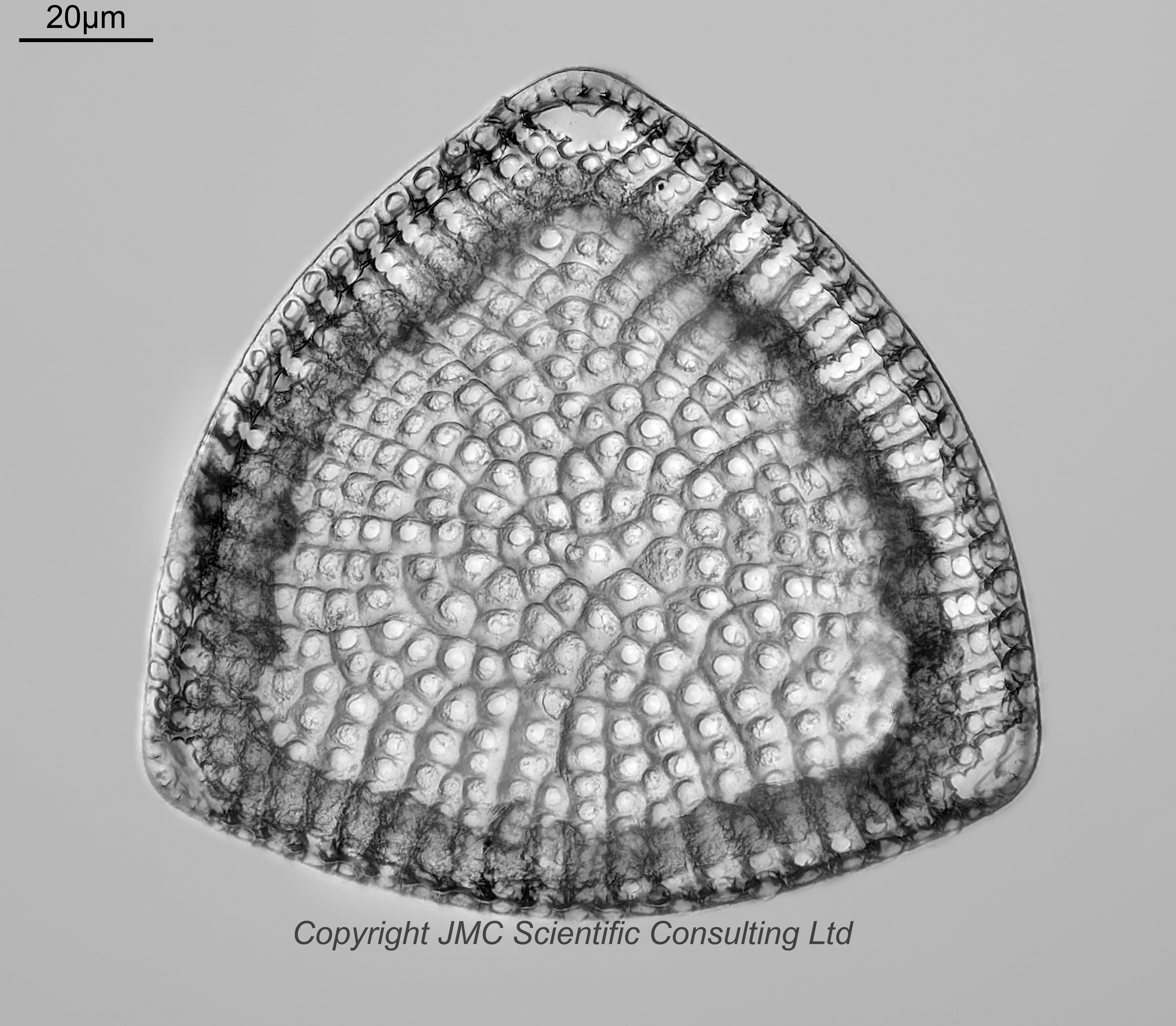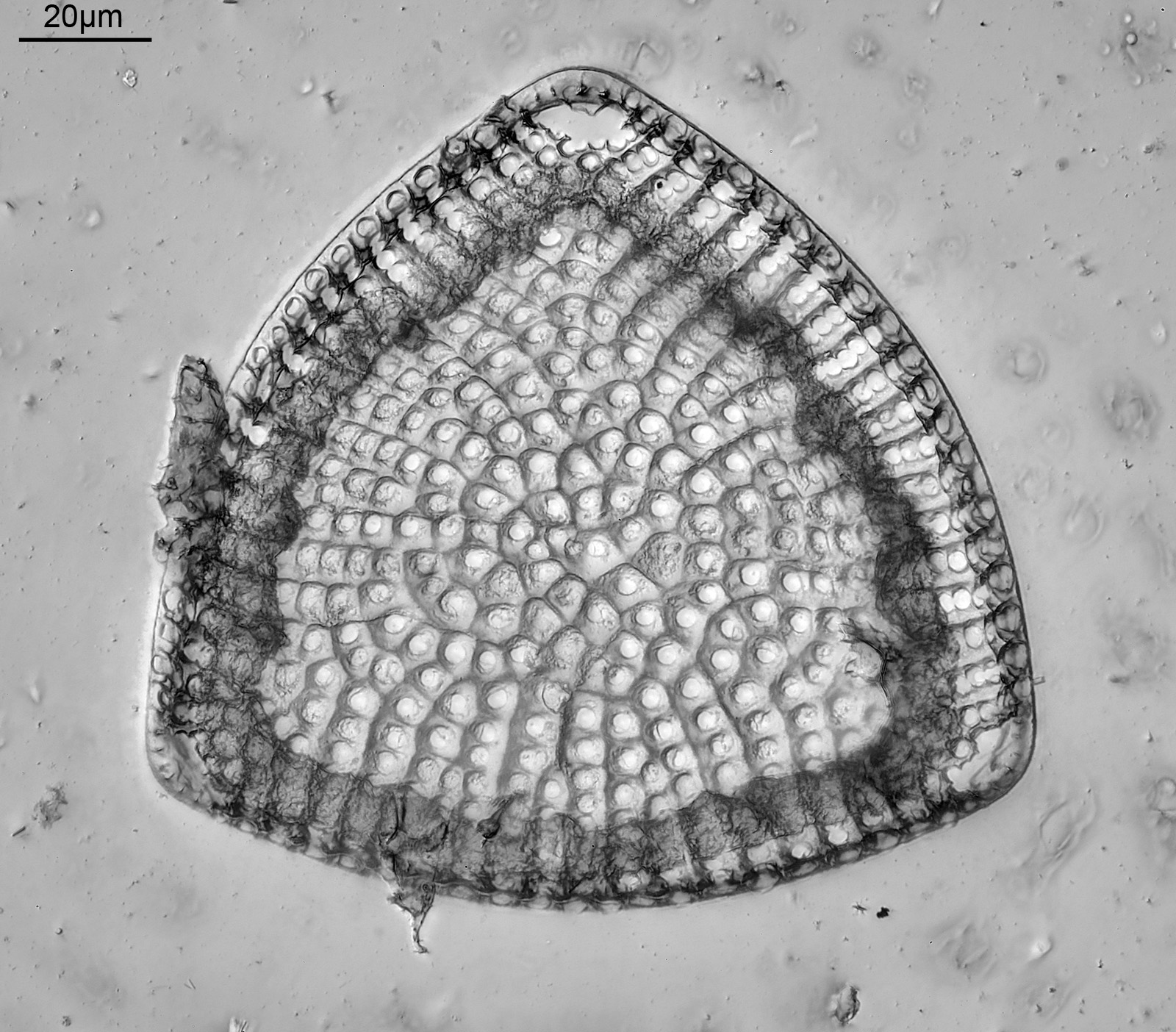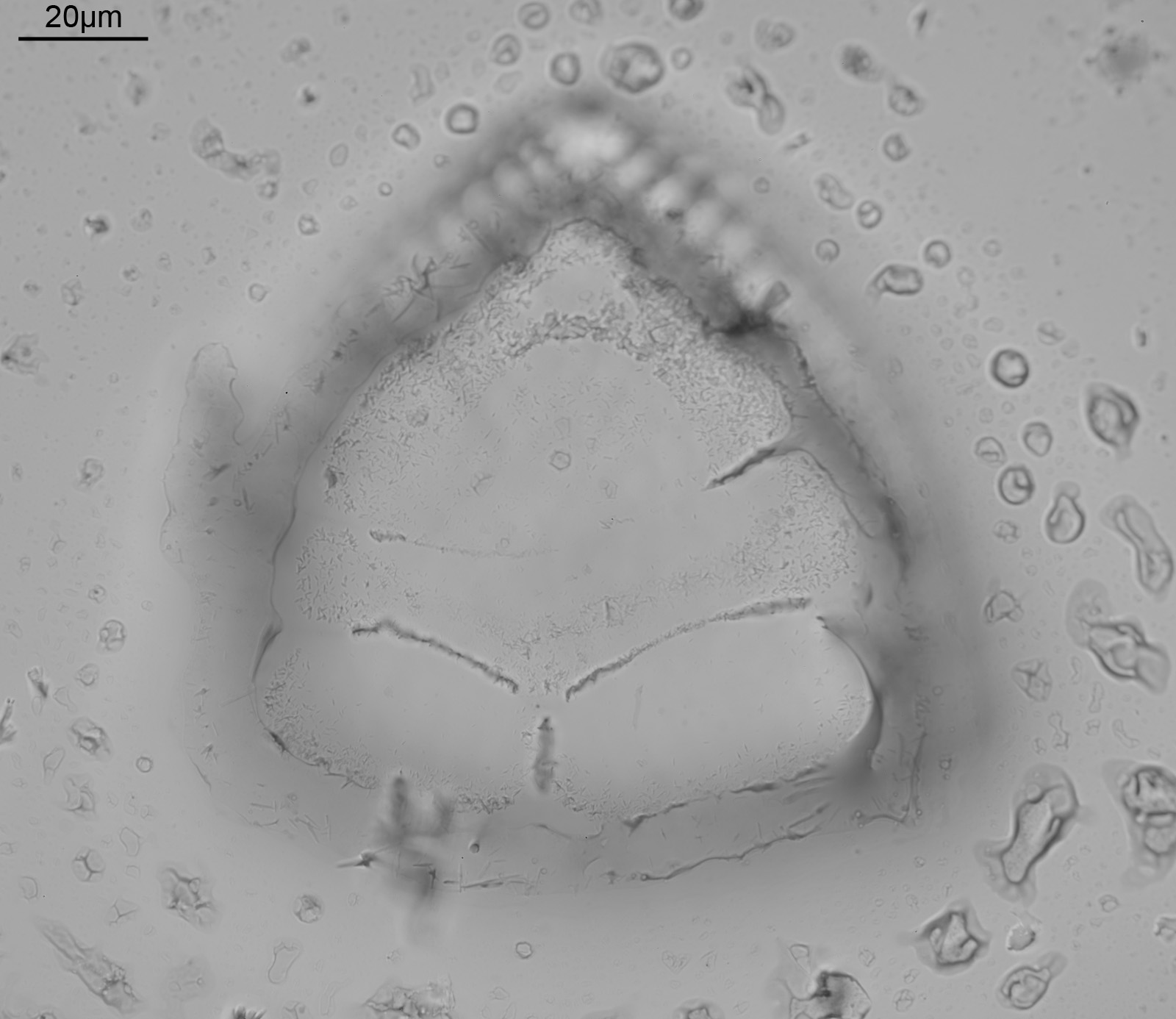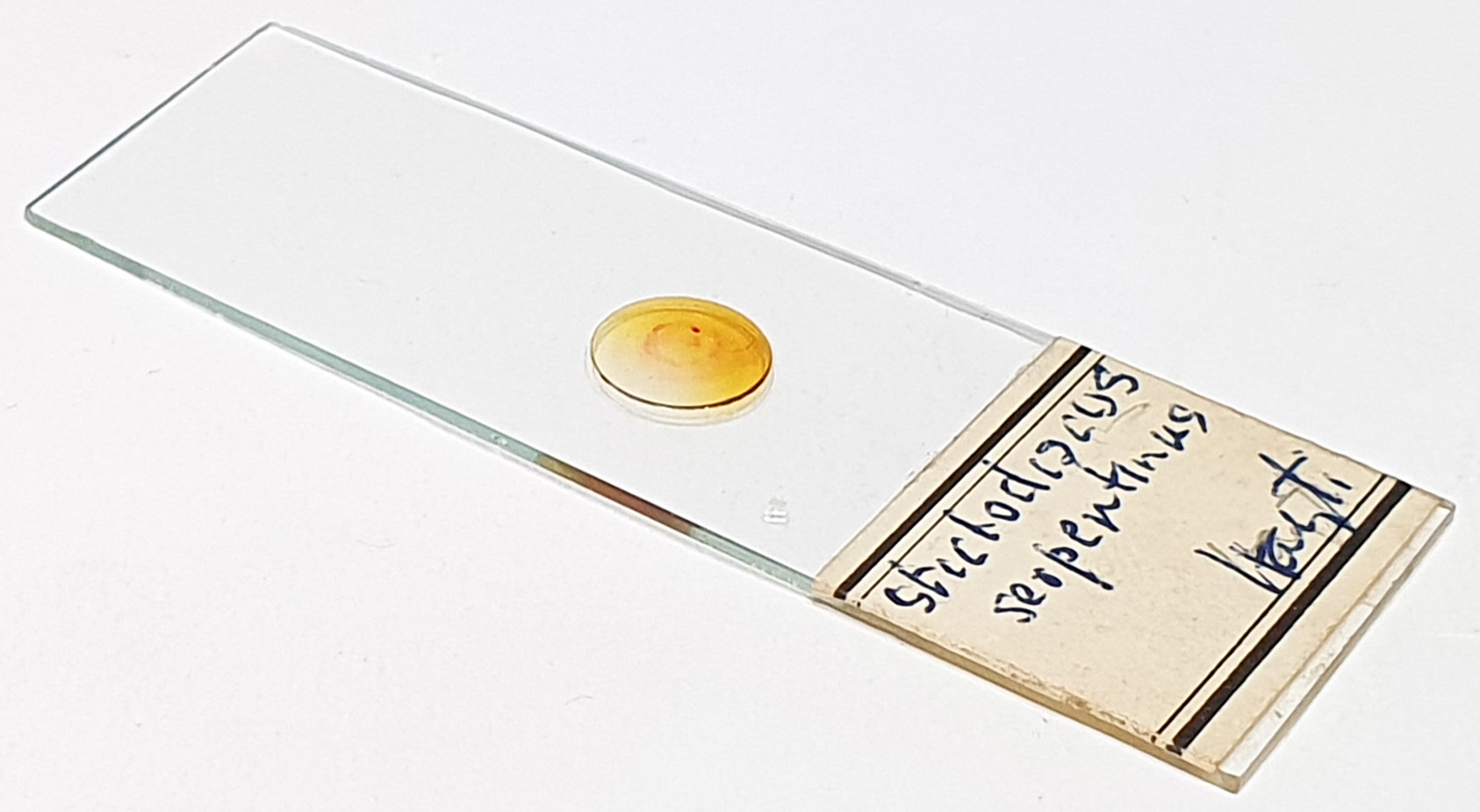



Stictodiscus serpentinus from Hayti (Haiti). Single example on the slide. Unknown maker. More on the identification and image in a minute. Olympus BHB microscope using 450nm LED light. 63x Leitz Pl Apo 1.4 objective, oil immersion. Olympus Aplanat Achromat condenser, oil immersion, oblique lighting. 2.5x Nikon CF PL photoeyepiece. Monochrome converted Nikon d850 camera. 90 images stacked in Zerene (Pmax).
Back to the naming and imaging. First the name. This is labelled as Stictodiscus serpentinus. This is written about in Published in: Truan y Luard, A. & Witt, O.N. (1888). Die Diatomaceen der Polycystinenkreide von Jérémie in Hayti Westindien. pp. [1]–38, incl. 7 pls [I-VII]. Berlin: Verlag von R. Friedländer & Sohn. Page 21 and Plate VI, figures 1 and 4. And this one does look like the images in there. However it doesn’t look that much like my other slide of Stictodiscus serpentinus shown here. This one is more ‘gibbous’ in shape and the ‘serpents’ are less obvious. Makes me wonder, are these the same thing? issue is there are so few examples to be sure. For now, I am going with the same name for both.
Next the slide and imaging. This slide has some issues, some serious issues. The original stack had debris in various places which obscured details on the diatom, and also the adhesive to the coverslip looks to have degraded, obscuring some details especially around the edge of the diatom. I did some quite heavy processing of the individual images before stacking to try and remove or reduce these ‘issues’ and also in the final image had to do some reconstruction of the rim in the 8-9 o’clock region. As such I am calling this an ‘edited’ image, as it has had more editing than I normally like to do. Such a shame as this is a rare diatom. However ‘an image’ is better than ‘no image’, and I have now preserved what is on the slide in case the mounting degrades further. One final note, the slide was surprisingly high contrast with a unique look about it. I have no idea what the mountant is or how the diatom has been processed, so do not know why it is. Again, such a shame it is in the condition it is in. C’est la vie.
I recently acquired about 60 slides by this maker, so if you want to see others by them, search for AAAAA in the Search option at the top of the page, and I’ll include this in each of the pages for them.